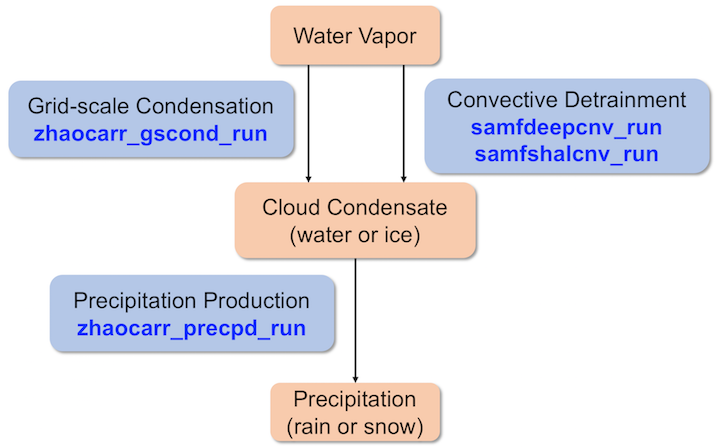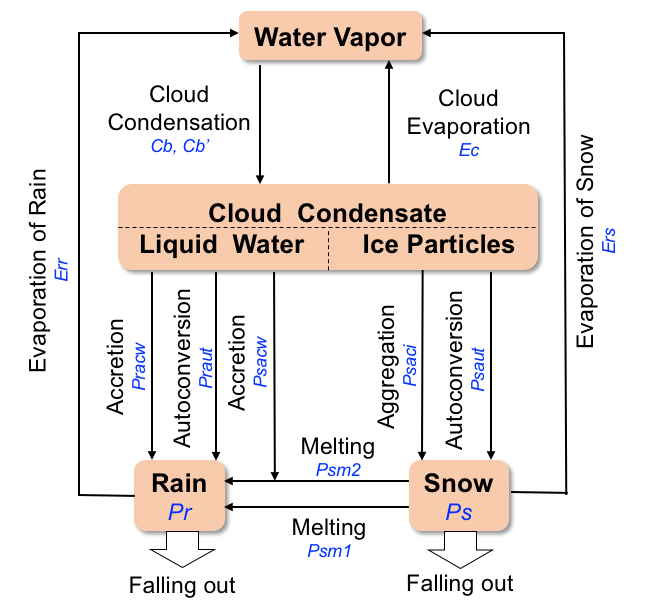This is the GFS scheme for grid-scale condensation and precipitation which is based on Zhao and Carr (1997) [111] and Sundqvist et al. (1989) [98] . The main feature of this parameterization is the inclusion of cloud water and cloud ice in both the convective and grid-scale precipitation paramterizations, and use only one predictive variable, the cloud water/ice mixing ratio \(m\), to represent both cloud water and cloud ice. This will reduce the model computation time and storage requirements.
Figure 1 shows a schematic illustration of this scheme. There are two sources of prognostic cloud condensate, namely convective detrainment (samfdeepcnv_run() and samfshalcnv_run()) and grid-sale condensation (zhaocarr_gscond_run()). Both of them produce either cloud water or cloud ice, depending on the cloud substance at and above the grid point at current and previous time steps, and on the temperature. Evaporation of cloud is allowed at points where the relative humidity is lower than the critical value required for condensation. Precipitation is diagnostically calculated directly from the cloud water/ice mixing ratio. Both frozen and liquid precipitation can be prognostically produced, enabling this scheme to predict precipitation type.

The parameterization of precipitation is required in order to remove water from the atmosphere and transport it to the ground. For the precipitation production, only the principle microphysical processes associated with formation of rain and snow are inlcuded. Figure 2 presents the microphysical processes considered in the microphysics scheme. Basically, there are four types of microphysical processes considered here:
